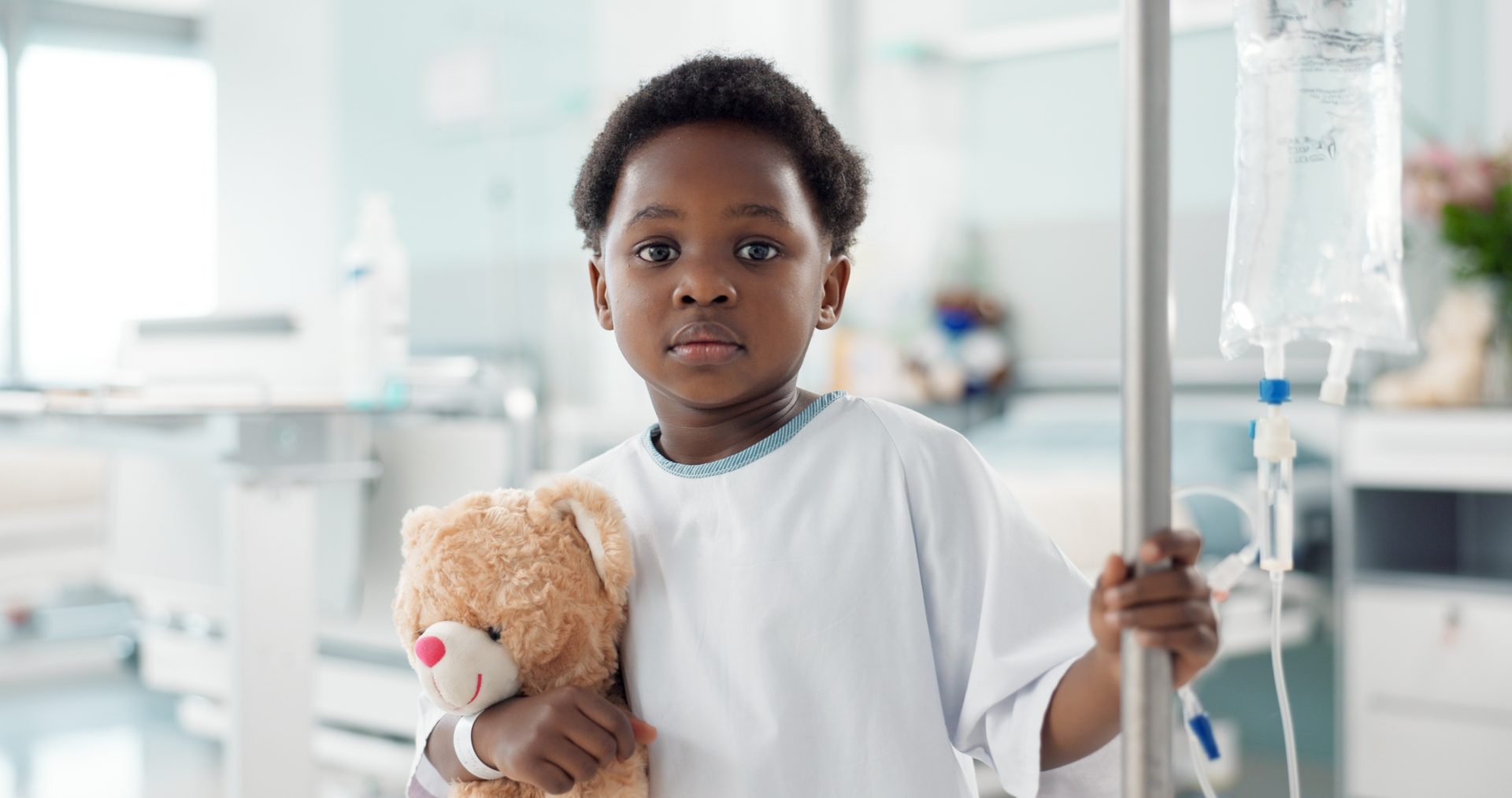Childhood cancer represents a reality that many parents prefer not to contemplate, yet understanding the facts provides crucial protection for families. Despite being relatively rare compared to adult cancers, childhood cancer affects approximately 1 in 285 children before their 20th birthday. This translates to roughly 15,000 new diagnoses annually in the United States alone.
The incidence of childhood cancer has increased by approximately 0.6% annually since the 1970s. This gradual rise likely reflects a combination of improved detection methods, changes in diagnostic classification, and potential environmental factors still under investigation. Understanding this trend helps place individual diagnoses in proper context.
Cancer ranks as the leading cause of death by disease among children beyond infancy in developed countries. This sobering statistic highlights the critical importance of awareness, early detection, and continued research funding. Unlike many adult cancers with established screening protocols, childhood cancers often lack standardized early detection methods, making parental awareness of warning signs particularly crucial.
The childhood cancer landscape differs dramatically from adult cancers in several important ways. While adult cancers frequently develop from lifestyle factors or aging processes over decades, childhood cancers typically arise from developmental abnormalities or genetic factors. This fundamental difference explains why prevention strategies effective for adults rarely apply to pediatric cases.
Understanding these basic prevalence patterns helps parents place childhood cancer in proper perspective – rare enough to avoid unnecessary anxiety but common enough to warrant awareness and attention to potential warning signs.
Types of childhood cancer: Not miniature versions of adult disease
Childhood cancers differ fundamentally from adult cancers in both biology and behavior. This distinction explains why pediatric oncology requires specialized approaches rather than simply applying adult treatment protocols to smaller bodies.
The major categories of childhood cancer
Leukemias account for approximately one-third of all childhood cancers, making them the most common pediatric cancer category. These blood cancers primarily affect bone marrow and lymphatic tissue, with acute lymphoblastic leukemia (ALL) representing the most frequent specific type. Leukemias typically present with symptoms including fatigue, unusual bruising, frequent infections, and bone pain.
Brain and central nervous system tumors constitute roughly 26% of childhood cancers, ranking as the second most common category and the leading solid tumor type in children. These tumors exhibit tremendous diversity, from relatively treatable forms like certain astrocytomas to more challenging variants like diffuse intrinsic pontine glioma (DIPG). Symptoms vary dramatically based on tumor location but may include headaches, vision changes, balance issues, or developmental regressions.
Neuroblastoma, developing from immature nerve cells, accounts for 6% of childhood cancers but approximately 15% of pediatric cancer deaths due to its frequently aggressive nature when diagnosed in later stages. This cancer often begins in the adrenal glands but can develop anywhere along the sympathetic nervous system. Many cases present with an abdominal mass, though symptoms vary based on tumor location and spread.
Wilms tumor (nephroblastoma) develops in the kidneys and typically affects children under age five. This tumor often presents as an abdominal mass detected during routine examinations or by parents during bathing or dressing. Though accounting for only about 5% of childhood cancers, its generally favorable prognosis with proper treatment makes early detection particularly valuable.
Lymphomas, including Hodgkin and non-Hodgkin varieties, affect the lymphatic system and represent approximately 8% of childhood cancers. These typically present with painless swollen lymph nodes, though other symptoms including fever, night sweats, and unexplained weight loss may occur as the disease progresses.
Rhabdomyosarcoma, developing in skeletal muscle tissue, can occur virtually anywhere in the body but most commonly affects the head, neck, bladder, vagina, arms, legs, and trunk. Symptoms vary dramatically based on tumor location but often include a visible or palpable mass and functional changes in affected areas.
Retinoblastoma affects the eye’s retina and typically occurs in children under age two. Often first noticed as a white reflection in the pupil (leukocoria) or misaligned eyes, this rare cancer accounts for only 2% of childhood cancers but has significant implications for both vision preservation and overall survival.
Bone cancers, primarily osteosarcoma and Ewing sarcoma, typically affect older children and adolescents, often during growth spurts. These cancers frequently present with persistent pain, swelling, or limited mobility in affected areas, sometimes initially dismissed as sports injuries or growing pains.
Understanding these distinct cancer types helps parents recognize that childhood cancer represents a collection of diverse diseases rather than a single condition. This diversity explains why symptoms, treatments, and outcomes vary so dramatically between different diagnoses.
Warning signs: What parents should watch for
Unlike many adult cancers with established screening protocols, childhood cancer detection often depends on parental observation of subtle changes. Understanding potential warning signs provides crucial protection without creating unnecessary anxiety.
Recognizing potential symptoms
Persistent, unexplained fever lasting more than two weeks without clear infectious cause warrants medical evaluation. While most fevers reflect common childhood illnesses, prolonged unexplained fever sometimes indicates leukemia or lymphoma, particularly when accompanied by other symptoms like fatigue or weight loss.
Unusual masses or swelling, especially without associated injury, represents another important warning sign. While many childhood lumps prove harmless, unexplained masses – particularly those that continue growing – require prompt medical assessment. Abdominal masses particularly warrant attention, as they might indicate neuroblastoma, Wilms tumor, or lymphoma.
Persistent pain, especially bone pain that wakes a child from sleep or limits normal activities, requires evaluation. Such pain sometimes indicates bone cancers, leukemia (which can cause bone pain as abnormal cells crowd the marrow space), or tumors pressing against nerves or other structures.
Unexplained paleness, fatigue, or decreased energy that persists beyond typical childhood illnesses deserves medical attention. While most children occasionally experience temporary tiredness, persistent fatigue might indicate anemia associated with leukemia or other cancers that affect blood cell production.
Easy bruising or bleeding, including frequent nosebleeds, unusual gum bleeding, or bruises appearing without apparent cause, sometimes indicates leukemia or other conditions affecting platelets and clotting factors. While minor bruising remains normal for active children, patterns of easy or unusual bruising warrant evaluation.
Visual changes including white pupils, newly crossed eyes, sudden vision loss, or persistent eye bulging require immediate assessment. These symptoms sometimes indicate retinoblastoma, optic pathway gliomas, or other tumors affecting visual structures.
Recurrent headaches, especially those worsening over time, occurring with vomiting, or happening in early morning, might indicate brain tumors or other intracranial pressure issues. While most childhood headaches have benign causes, persistent or unusual headache patterns deserve medical attention.
Sudden unexplained weight loss rarely occurs in healthy, growing children and warrants prompt evaluation. Significant weight loss without apparent cause sometimes indicates cancer-related metabolic changes or appetite suppression from an expanding tumor.
When to seek medical attention
Understanding when to escalate concerns to medical professionals helps balance vigilance with practicality. These guidelines help parents navigate this challenging balance:
Persistent symptoms lasting more than two weeks without improvement generally warrant medical evaluation. This timeframe exceeds most common childhood illnesses while still allowing prompt intervention for potentially serious conditions.
Symptoms that interfere with normal activities, particularly when they prevent participation in previously enjoyed activities or disrupt sleep patterns, deserve attention. Such functional impacts often signal more significant underlying issues.
Multiple symptoms occurring together increase the importance of medical evaluation. While individual symptoms often have benign explanations, combinations of warning signs – such as fatigue with bruising or headaches with vomiting – increase the likelihood of more serious underlying causes.
Trust parental instinct regarding unusual changes in your child. Research consistently shows that parental concern itself represents a significant predictor of serious illness, often detecting subtle changes that standardized screening might miss.
Remember that early medical evaluation offers two valuable outcomes: either reassurance that symptoms have benign causes or early detection that significantly improves treatment outcomes for serious conditions. This win-win scenario makes prompt evaluation the logical choice when genuine concerns arise.
Diagnosis and staging: Understanding the process
When childhood cancer concerns arise, understanding the diagnostic journey helps families navigate this challenging process with greater confidence and appropriate expectations.
Initial evaluation steps
The diagnostic process typically begins with a thorough physical examination and detailed medical history. The physician will assess physical symptoms while gathering information about symptom progression, family medical history, and potential environmental exposures. This comprehensive initial assessment helps determine appropriate next steps.
Blood tests provide crucial early information in many cases. Complete blood counts assess blood cell production potentially affected by leukemia or bone marrow involvement from other cancers. Additional blood chemistry panels evaluate organ function and detect certain tumor markers that might indicate specific cancer types.
Imaging studies, including X-rays, ultrasounds, CT scans, and MRIs, help identify abnormal masses and determine their location, size, and potential impact on surrounding structures. Different imaging modalities offer varying benefits – MRIs provide excellent soft tissue detail, while CT scans better visualize bone involvement.
Biopsy – obtaining tissue samples from suspicious areas – typically provides definitive diagnosis. Depending on location and other factors, biopsies might be performed as needle procedures, endoscopic sampling, or surgical excisions. The tissue undergoes detailed pathological examination to determine cancer type, genetic features, and other characteristics that guide treatment planning.
Specialized tests including bone marrow aspiration (common in leukemia diagnosis), lumbar punctures (checking for cancer cells in spinal fluid), and specialized molecular testing help complete the diagnostic picture. These assessments provide crucial information about disease extent and biological characteristics that influence treatment approaches.
The staging process explained
Once diagnosis confirms cancer, staging determines how far the disease has spread. This crucial process guides treatment intensity and provides prognostic information:
Stage 1 typically indicates localized disease confined to its origin site, often completely removable through surgery alone. These early-stage diagnoses generally carry the most favorable prognosis with appropriate treatment.
Stage 2 usually means the cancer remains relatively localized but has grown larger or spread to nearby structures, potentially requiring more intensive treatment approaches than stage 1 disease.
Stage 3 typically indicates more significant regional spread to nearby tissues or lymph nodes, requiring combination treatment approaches and more intensive protocols.
Stage 4 signifies distant spread (metastasis) to other body areas beyond the original site. These cases typically require the most intensive treatment approaches, though outcomes vary dramatically based on cancer type, patient age, and specific biological features.
In addition to numerical staging, many childhood cancers undergo specialized classification systems based on tumor biology, genetic features, and other factors that significantly influence treatment planning beyond simple staging. These complex classification systems explain why seemingly similar diagnoses sometimes receive dramatically different treatment approaches.
Understanding this diagnostic and staging process helps families recognize that thorough initial evaluation creates the foundation for optimized treatment planning. While the diagnostic period often creates significant anxiety, the detailed information gathered during this phase proves essential for developing the most effective treatment strategy.
Treatment approaches: More effective than many realize
Childhood cancer treatment has achieved remarkable progress in recent decades, with overall survival rates increasing from less than 20% in the 1960s to over 85% today for many common pediatric cancers. This dramatic improvement stems from both treatment advances and better supportive care strategies.
Current treatment modalities
Chemotherapy remains a cornerstone of pediatric cancer treatment, using medications to target rapidly dividing cells throughout the body. Modern protocols use combinations of medications carefully calibrated to maximize cancer-fighting effects while minimizing long-term impacts. Unlike many adult chemotherapy regimens, pediatric protocols often use more intensive approaches balanced by children’s generally better physiological resilience.
Surgery plays a crucial role in many solid tumor treatments, removing cancer tissue while preserving normal structures whenever possible. Advances in surgical techniques, including minimally invasive approaches and better imaging guidance, have improved both the effectiveness and safety of pediatric cancer surgeries.
Radiation therapy uses precisely targeted energy to destroy cancer cells, particularly valuable for tumors in locations where complete surgical removal proves impossible. Modern techniques including proton therapy and intensity-modulated radiation therapy offer more precise targeting that spares surrounding healthy tissues, particularly important for developing bodies.
Immunotherapy, teaching the body’s immune system to recognize and attack cancer cells, represents one of the most promising recent advances. From antibody therapies to CAR T-cell approaches that reengineer immune cells to target specific cancers, these treatments have dramatically improved outcomes for some previously challenging childhood cancers.
Targeted therapies addressing specific genetic or molecular features of certain cancers continue revolutionizing treatment for tumors with particular mutations or characteristics. These precisely focused medications often cause fewer side effects than traditional chemotherapy while providing enhanced effectiveness against cancers with specific features.
Bone marrow and stem cell transplantation provides options for particularly high-risk cases by replacing diseased bone marrow with healthy donor cells or the patient’s own previously collected stem cells. This intensive approach proves particularly valuable for certain leukemias, lymphomas, and some solid tumors with high recurrence risks.
Treatment settings and team approach
Specialized pediatric oncology centers provide comprehensive care specifically designed for children’s unique needs. These centers combine medical expertise with child-focused support services and access to clinical trials that might offer additional options beyond standard protocols.
Multidisciplinary teams including pediatric oncologists, surgeons, radiation oncologists, specialized nurses, child life specialists, nutritionists, psychologists, and social workers collaborate to address both medical and psychosocial needs. This comprehensive approach recognizes that effective cancer treatment extends beyond medical interventions to include emotional, developmental, and family support.
Clinical trials offer access to promising new treatments while advancing knowledge for future patients. Approximately 60% of pediatric cancer patients participate in clinical research, contributing to the remarkable progress in treatment effectiveness while potentially accessing cutting-edge approaches not otherwise available.
Second opinion consultations from other pediatric cancer specialists often provide valuable additional perspectives for complex cases. Most pediatric oncologists actively encourage such consultations, recognizing that collaborative approaches benefit patients by ensuring all reasonable options receive consideration.
Understanding these treatment approaches helps families recognize that childhood cancer care represents a sophisticated, highly specialized field rather than simply scaled-down adult oncology. This pediatric-specific expertise contributes significantly to the improved outcomes achieved in recent decades.
Long-term outcomes: Better than most people realize
Childhood cancer outcomes have improved dramatically over recent decades, with overall five-year survival rates now exceeding 85% for all childhood cancers combined. This remarkable progress represents one of modern medicine’s great success stories, though challenges remain for certain cancer types.
Survival rates and what they mean
Survival statistics provide important population-level insights but require careful interpretation for individual cases. These numbers represent averages across large patient groups rather than predictions for specific children. Individual outcomes depend on numerous factors including cancer type, stage, biological features, age at diagnosis, and response to initial treatment.
Cure rates – defined as complete remission with no disease recurrence after five years – now exceed 90% for certain childhood cancers including Wilms tumor, retinoblastoma, and Hodgkin lymphoma. Even previously devastating diagnoses like acute lymphoblastic leukemia now achieve cure rates above 90% for standard-risk cases with modern treatment protocols.
Some childhood cancers continue presenting significant challenges despite treatment advances. Diffuse intrinsic pontine glioma (DIPG), certain metastatic sarcomas, and some high-risk neuroblastoma cases maintain lower survival rates despite intensive research efforts. These challenging diagnoses receive particular focus in current research initiatives.
Recurrence risks – the possibility of cancer returning after initial treatment – vary dramatically between different cancer types and stages. While some diagnoses carry very low recurrence risks after successful initial treatment, others require extended monitoring due to higher recurrence possibilities, particularly during the first few years following treatment completion.
Long-term effects and monitoring
Survivorship care addresses potential long-term effects of both cancer itself and treatments received. While modern protocols work to minimize late effects, some survivors experience issues requiring ongoing monitoring and management. These may include:
Cardiac effects from certain chemotherapy medications require heart function monitoring, particularly for patients who received anthracycline medications like doxorubicin. Modern protocols limit cumulative doses of these medications whenever possible while maintaining treatment effectiveness.
Fertility impacts vary significantly based on cancer type, treatment intensity, and age during treatment. Advances in fertility preservation, including ovarian and testicular tissue freezing even for very young patients, increasingly provide future reproductive options for childhood cancer survivors.
Secondary cancers occur in approximately 4-6% of childhood cancer survivors, representing a significantly elevated risk compared to the general population. This increased risk stems from both genetic predispositions that contributed to initial cancer development and effects of certain treatments, particularly radiation therapy. Lifelong monitoring helps detect any secondary cancers at their earliest, most treatable stages.
Neurocognitive effects primarily affect children who received central nervous system radiation or certain high-dose chemotherapies that penetrate the brain. Modern protocols minimize these risks whenever possible through reduced radiation doses, targeted delivery methods, and alternative treatment approaches for very young children.
Growth and endocrine impacts may affect children treated during critical developmental periods, particularly those receiving radiation to endocrine glands or brain regions regulating hormonal function. Regular monitoring allows appropriate intervention with growth hormone or other hormone replacements when necessary.
Long-term follow-up programs specifically designed for childhood cancer survivors provide comprehensive monitoring for potential late effects while celebrating the remarkable achievement of survivorship. These specialized programs offer surveillance for potential issues while supporting survivors in achieving their full life potential.
Understanding this balance between impressive cure rates and potential long-term considerations helps families maintain realistic optimism throughout the cancer journey. Modern pediatric oncology increasingly focuses on both curing cancer and preserving long-term quality of life through treatment approaches designed to minimize late effects whenever possible.
Supporting a child with cancer: What really helps
When a family faces childhood cancer, practical support makes a tremendous difference in their ability to focus on their child’s needs while maintaining some semblance of normal family functioning.
Practical assistance that matters most
Concrete help with daily logistics often provides more meaningful support than emotional expressions alone. Organizing meal deliveries, arranging transportation for siblings, handling household maintenance, or providing gift cards for gas and hospital parking addresses practical challenges that otherwise consume precious family energy.
Financial navigation assistance helps families manage the economic impact of childhood cancer. Even with insurance coverage, many families face significant out-of-pocket expenses alongside potential income reduction if parents reduce work hours to manage medical appointments. Financial counselors at treatment centers can identify assistance programs, while friends might help organize fundraising efforts or navigate insurance appeals when needed.
Sibling support deserves particular attention, as brothers and sisters often experience significant disruption with less emotional capacity to process these changes than adults. Maintaining siblings’ normal activities, ensuring they receive accurate age-appropriate information, and creating special time for them helps preserve their well-being during this challenging family period.
Education coordination between hospital-based teachers, home schools, and parents helps maintain academic progress despite treatment interruptions. Most childhood cancer treatment centers provide educational specialists who facilitate this coordination, ensuring that children maintain connections with their school communities while receiving appropriate educational accommodations.
Emotional support from mental health professionals specifically experienced with pediatric cancer helps both children and families navigate the psychological impact of diagnosis and treatment. These specialized providers understand the unique challenges of childhood cancer and can provide age-appropriate strategies for coping with fears, treatment side effects, and disrupted normal development.
How to talk with a child about cancer
Age-appropriate honesty provides the foundation for effective communication about cancer with children. Even young children sense when something serious is happening, and providing truthful information matching their developmental level prevents them from filling information gaps with potentially more frightening imagined scenarios.
Simple, concrete explanations using child-friendly language help children understand their situation without overwhelming them. Analogies comparing cancer cells to weeds in a garden or describing medicine as “special cells fighters” often help young children grasp complex concepts without inducing additional fear.
Addressing common misconceptions proactively helps prevent unnecessary anxiety. Many children worry they caused their cancer through some action or thought, fear treatment represents punishment, or believe cancer always results in death based on limited prior exposures to the concept. Directly addressing these misconceptions provides important reassurance.
Maintaining normal rules and expectations as much as possible helps preserve children’s sense of security during treatment. While some flexibility becomes necessary, continuing appropriate behavior expectations and normal family routines provides stability during an otherwise uncertain time.
Encouraging expression through art, play, and conversations allows children to process their experiences according to their developmental capabilities. Many children express concerns through play or drawing that they cannot articulate verbally, making these activities important emotional outlets during treatment.
Balancing honesty with hope represents perhaps the most important communication principle. Children need accurate information about their situation delivered with age-appropriate optimism about treatment helping them feel better. This balanced approach fosters resilience while maintaining trust in the adults guiding their care.
Prevention possibilities: What parents can control
While most childhood cancers cannot be prevented with current knowledge, certain protective steps offer reasonable risk reduction without creating undue anxiety or restriction.
Known risk factors and protective steps
Environmental exposures to certain substances during development may influence cancer risk. Limiting exposure to household chemicals, pesticides, and other potentially harmful substances represents a reasonable precautionary approach during pregnancy and early childhood. Choosing less toxic household products and avoiding unnecessary chemical exposures provides general health benefits beyond cancer consideration.
Radiation exposure from unnecessary medical imaging deserves thoughtful consideration. While diagnostic imaging provides crucial medical information when properly indicated, parents can reasonably question whether each proposed scan is necessary and whether alternative imaging methods might provide needed information with less radiation exposure.
Tobacco smoke exposure increases risk for certain childhood cancers, particularly leukemias, lymphomas, and brain tumors. Maintaining smoke-free environments during pregnancy and throughout childhood reduces this preventable risk factor while providing numerous additional health benefits.
Healthy weight maintenance throughout childhood may reduce risk for some adolescent and young adult cancers. Establishing healthy eating and activity patterns from early childhood provides lifetime benefits extending far beyond cancer prevention alone.
Breastfeeding, when possible, appears to provide modest protective effects against certain childhood cancers including leukemia. This protective benefit adds to breastfeeding’s numerous other advantages, though its cancer-specific impact remains relatively small.
Genetic considerations and testing
Inherited cancer predisposition syndromes account for approximately 5-10% of childhood cancers. Families with patterns of childhood cancer, rare cancer types, multiple cancer diagnoses in close relatives, or cancers occurring at unusually young ages should consider genetic counseling to assess potential inherited risk factors.
Genetic testing identifies specific mutations associated with increased cancer risk in families meeting appropriate testing criteria. This information allows tailored screening protocols that may detect cancers at earlier, more treatable stages in children carrying inherited risk factors.
Understanding that most childhood cancers do not result from inherited mutations helps alleviate parental guilt about potentially passing cancer risk to their children. The vast majority of pediatric cancers develop from spontaneous genetic changes during development rather than inherited patterns.
Resources every parent should know about
Navigating childhood cancer requires knowledge of available support resources that can make substantial differences in both practical and emotional management of the cancer journey.
Organizations providing support and information
National organizations including the American Childhood Cancer Organization, St. Baldrick’s Foundation, and Alex’s Lemonade Stand Foundation provide valuable information, research funding, and support services for families facing pediatric cancer. These organizations offer resources ranging from diagnosis-specific information to financial assistance programs.
Hospital-based support programs provide immediate practical assistance within treatment settings. Child life specialists help children understand and cope with procedures, social workers connect families with community resources, and parent mentors who have previously navigated childhood cancer offer invaluable perspective and practical advice.
Online communities specifically focused on particular childhood cancer types allow families to connect with others facing similar challenges. These communities often provide treatment information, practical coping strategies, and emotional support from others who truly understand the specific challenges of particular diagnoses.
Financial and practical assistance sources
Specialized financial assistance programs help address the economic impact of childhood cancer. Organizations including the National Children’s Cancer Society, the Leukemia & Lymphoma Society’s Patient Aid Program, and diagnosis-specific foundations provide various forms of financial support ranging from treatment expenses to transportation and housing costs.
Temporary housing options near major treatment centers, including Ronald McDonald House facilities and hospital-affiliated housing programs, provide affordable accommodations for families traveling for treatment. These programs often offer additional support services beyond housing, creating temporary communities of families facing similar challenges.
Insurance navigation assistance through hospital financial counselors helps families maximize their coverage benefits while identifying supplemental programs for uncovered expenses. This specialized guidance proves particularly valuable for navigating the complex healthcare financing system while dealing with the emotional impact of a child’s cancer diagnosis.
Transportation assistance programs through organizations like the American Cancer Society help families reach treatment facilities, particularly valuable for those requiring specialized care available only at distant medical centers. These programs range from volunteer driver networks to air transportation services for longer distances.
Educational advocacy services help maintain academic progress throughout treatment and survivorship. Organizations including the Association of Pediatric Hematology/Oncology Educational Specialists provide resources helping families secure appropriate educational accommodations and maintain school connections during treatment.
Knowing these resources exist and how to access them can dramatically improve a family’s ability to navigate the childhood cancer journey. While no one wishes to need such support, their availability provides crucial assistance for families facing one of life’s most challenging situations.
Understanding these essential facts about childhood cancer helps parents navigate between appropriate vigilance and unnecessary worry. With knowledge about warning signs, diagnostic processes, treatment approaches, and support resources, families can face this challenging possibility with informed perspective that balances awareness with appropriate optimism about modern treatment capabilities.













